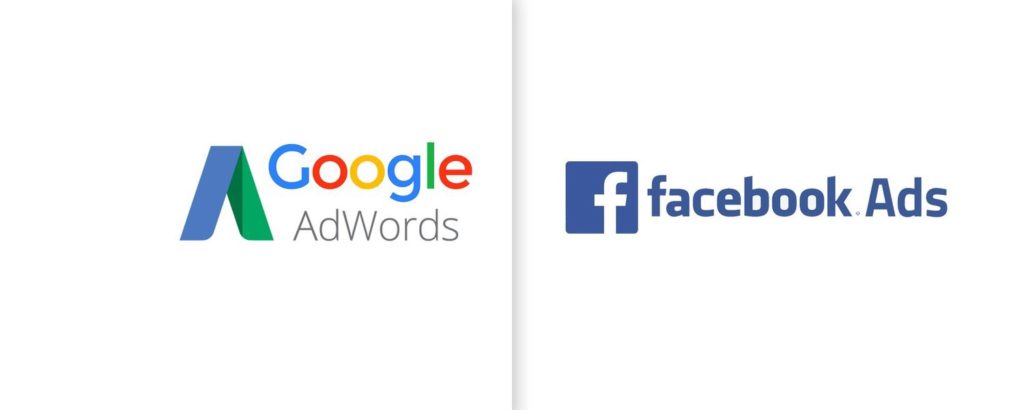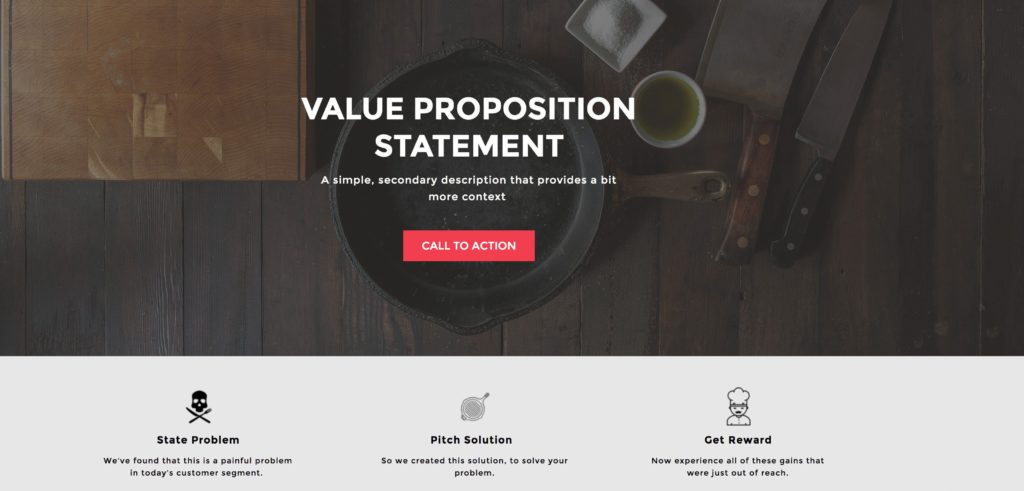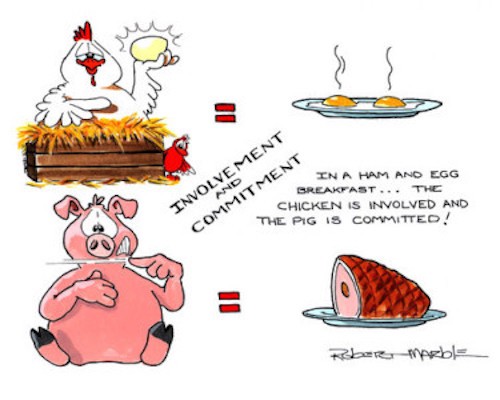Okay, you think you have nailed a good value proposition for your new product? You like it, your friends like it. Good. But what matters is that your future customers want it or at least understand it.
Here are 4 ways to test this value proposition with your potential customers:
- Online Ads
- Landing Page
- Pitch
- Solution Interview
Online Ads
The idea is to broadcast your value proposition to target customers in the form of an ad.
Google Ads or Facebook/Instagram Ads are great for that. They allow you to run ads shown to their customers (/users). You only pay for the click you receive on your ad. You can also run ads on other platforms (Twitter, LinkedIn), depending on where you think your customers are online.

Facebook and Google work differently and give different results. You should decide and test which platform to use:
On Facebook Ads
- Customer: A customer looking at Facebook is leaning backward, looking to be distracted or surprised. His/her next action is to scroll down.
- Targeting: On Facebook, you can target customers based on their profile and all the information Facebook is collecting about them
- Channels: Your add will appear on Facebook and you can choose to reach customers on Instagram as well.
- Message: Image, video, and some text. You will need a Facebook page as well to run the ads.
On Google Ads
- Customer: A customer on Google is leaning forward, searching for something and his/her next action is to click on a link.
- Targeting: On Google, you can target customers based on the keywords they are searching for.
- Channels: Your ad will appear for some customers on the Google search engine. You can also choose to broadcast your ad out to a network of search partners and the display network.
- Message: in its simple form, your ad will have a title a web link and a few lines of text.
Those ads constitute the top of your funnel. Clicking on them should lead the user to either a form (like Typeform or other) or to a Landing Page, which will allow you to capture people’s contact provided they are interested.
Of course, you get extensive analytics from Google and Facebook on your ad campaign. But here you are looking to understand if your value proposition is marching your customer segment. Define an acceptable threshold at iterate on your ads.
Online ads will only give you quantitative feedback. But if it doesn’t work, you have no idea why. That’s why you need to complete, or even better start with qualitative feedback.
Landing Page
The landing page is now a classic. I think I first head about the concept in the 4 hours week book by Tim Ferris. To build a landing page, you can use sites like Strikingly, Squarespace, Wix or Weebly. They all provide similar services.
To build your landing page, I recommend this very comprehensive article: How to set up a landing page for testing a business or product idea.
As a result of what should something like this.

With your Landing Page done, you already achieved two things:
- you made your value proposition tangible — and made hard choices around wording, customer and benefits.
- discussed it with your team and eventually aligned, helping uncover some potential misunderstandings
But what matters is customer reactions. You can test this Landing Page in 2 ways:
- expose it to customers, either with Online Ads, Email or posting it on social media where your customers are. Measure clicks on the ‘call to action’ button. Great if it works. If it doesn’t, you need to find out why?
- the 5-seconds test
The 5-seconds test allows you to get qualitative (the why?) feedback on your landing page. Here you engage directly with your target customer in the real world, not online and you show them your Landing Page. For 5 seconds. It’s short. It’s the 5 seconds it takes for a distracted web surfer to consider an offer and make up their mind about it.
After 5 seconds, hide your Landing Page and asks questions:
What was it? What did you see? What did you understand? Take notes. Don’t explain. This will give you, surprises for sure, but also the customer perspective and the different points to improve.
A pitch
Pitching your value proposition directly to potential customers is a great way to test comprehension and clarity. You can see their reaction and listen to their questions.
Ask them to rephrase back what you pitched and see what they understood. Listen to the word they are using — those are words you could use in your next pitch.
If a customer is excited about your offer, you can follow up with a solution interview.
Solution Interviews
A solutions interview is to test the appetite of the customer for what you have to offer. It starts with a little preparation and finished with meeting the customer. This is how to structure those interviews.
Part 1 — Problem validation
Before you make any proposition to the customer, make sure they are in your target segment. Qualify their needs.
We have been talking to lots of people like yourself and we have heard this [problem/need/situation].
Could you share how does it relate to your experience? What story comes to your mind? What would you like to share?
After this conversation, you know with more certainty if the customer needs your solutions or not. Now test your value propositions.
Part 2 — Co-create around the value proposition
Here explain what you have in mind, our solution, and assess the customer interest.
We are looking to “value proposition”. Is this something we can explore with you today? What does this mean for you?
How would you use it tomorrow? Why is it important?
You can also drill down to the feature level.
We are thinking about feature 1,2,3. Which one do you think is most relevant to you, which one would address best your problem. Why?
Part 3 — Validation and Commitment
Would it make sense for us to explore this?
Yes.
Now you have an interested customer. To assess how interested he/she is, ask for a commitment. It’s is something a customer would do, should they be interested in your offer. For you, it’s proof of their interest.
This proof of commitment has some cost to the customer. Either in time, effort, energy, financial, etc… If it has no cost, to implication for the customer, this is not a commitment. Because it has a cost, we also call this a currency.
Here are examples of what you could ask for:
- Money — pre-order (think kick starter or prepayment)
- A signed agreement (NDA, contract for a POC, exclusivity, …)
- Invitation to another meeting (with the boss, at a different location)
- An email, phone number (in b2c context)
- Access to sensitive data -(contact list, usage data for AI products,…)
Depending on the situation, some of those examples don’t commit customers. Are you asking this customer to be committed or involved?

Of course, your value proposition is something that changes over time and will need to be refined as you keep on learning from your customers.
For more on running experiments, read David Bland’s post: An Introduction to Experiment Pairing.



[…] 4 ways to test your Value Proposition […]
[…] 4. Franck Debane. 4 Ways to Test your Value Proposition. Debane.org. https://debane.org/franck/4-ways-to-test-your-value-proposition-c0a631c5adf8/ […]